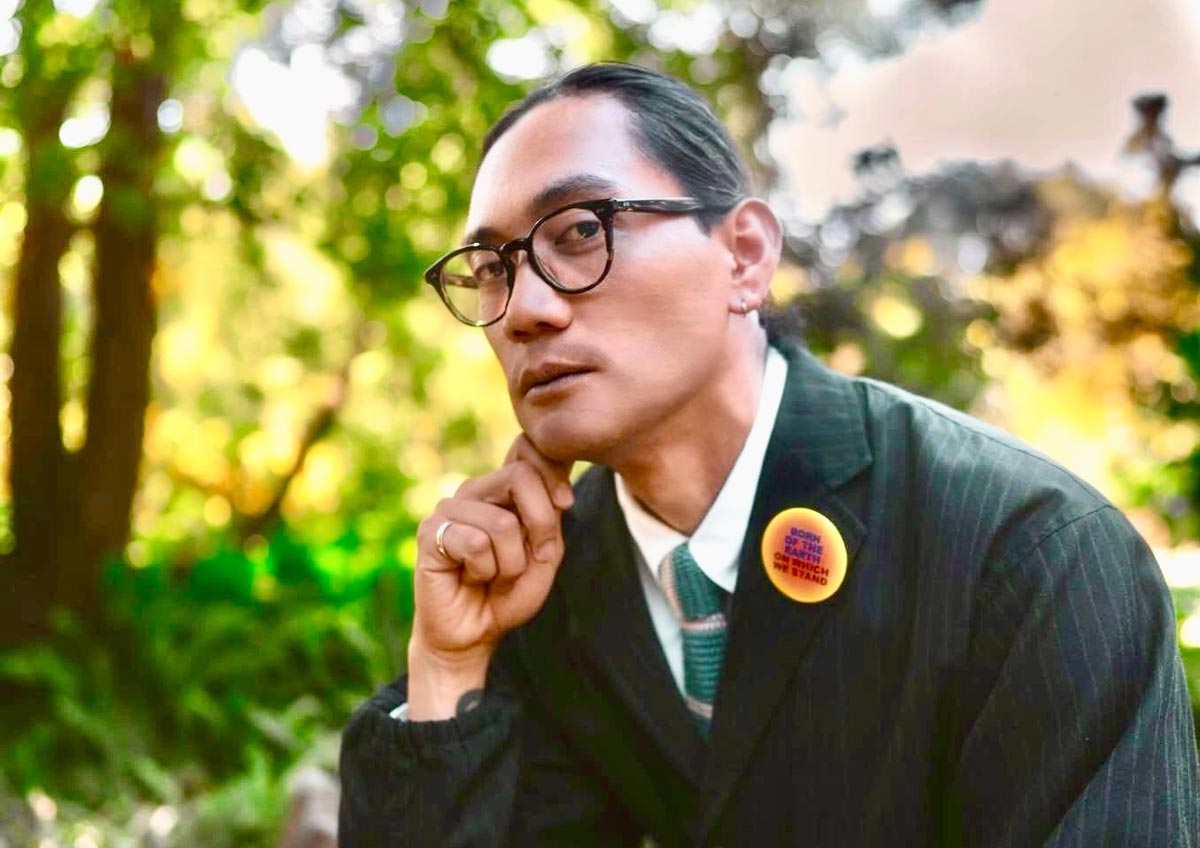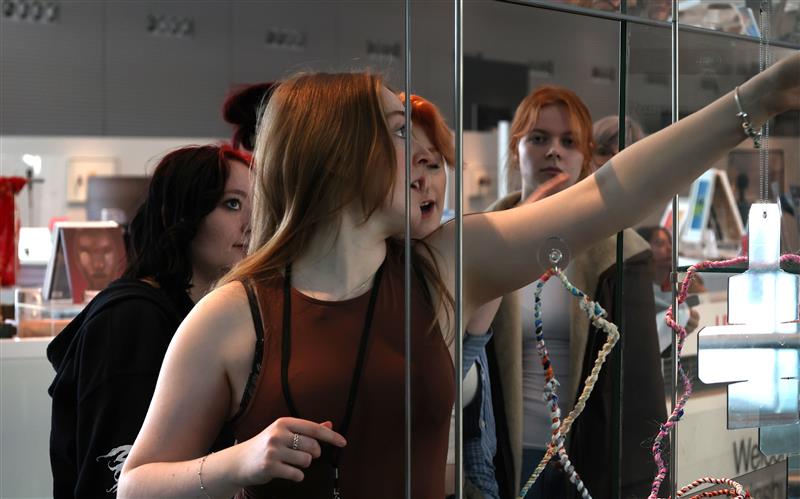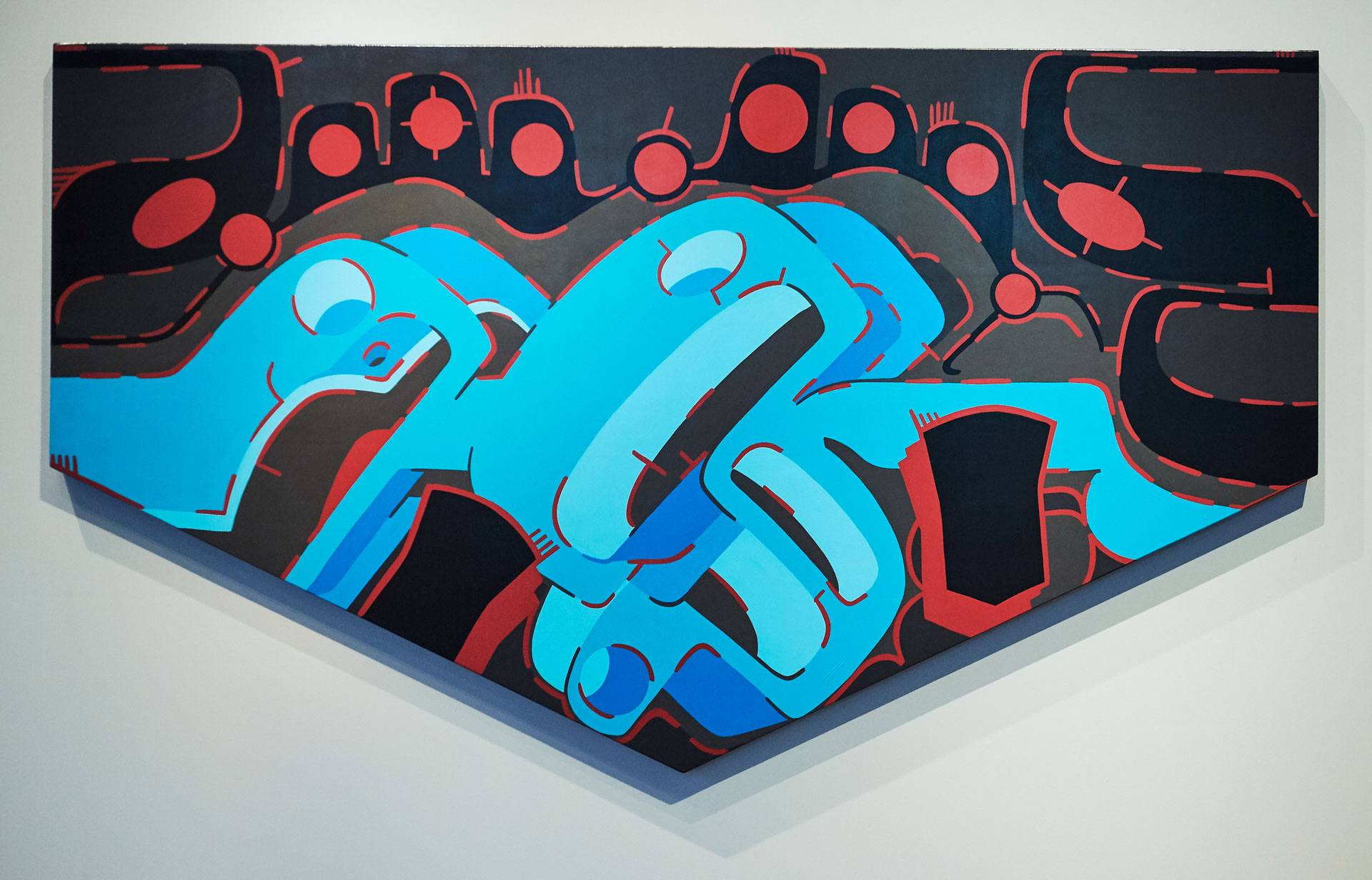
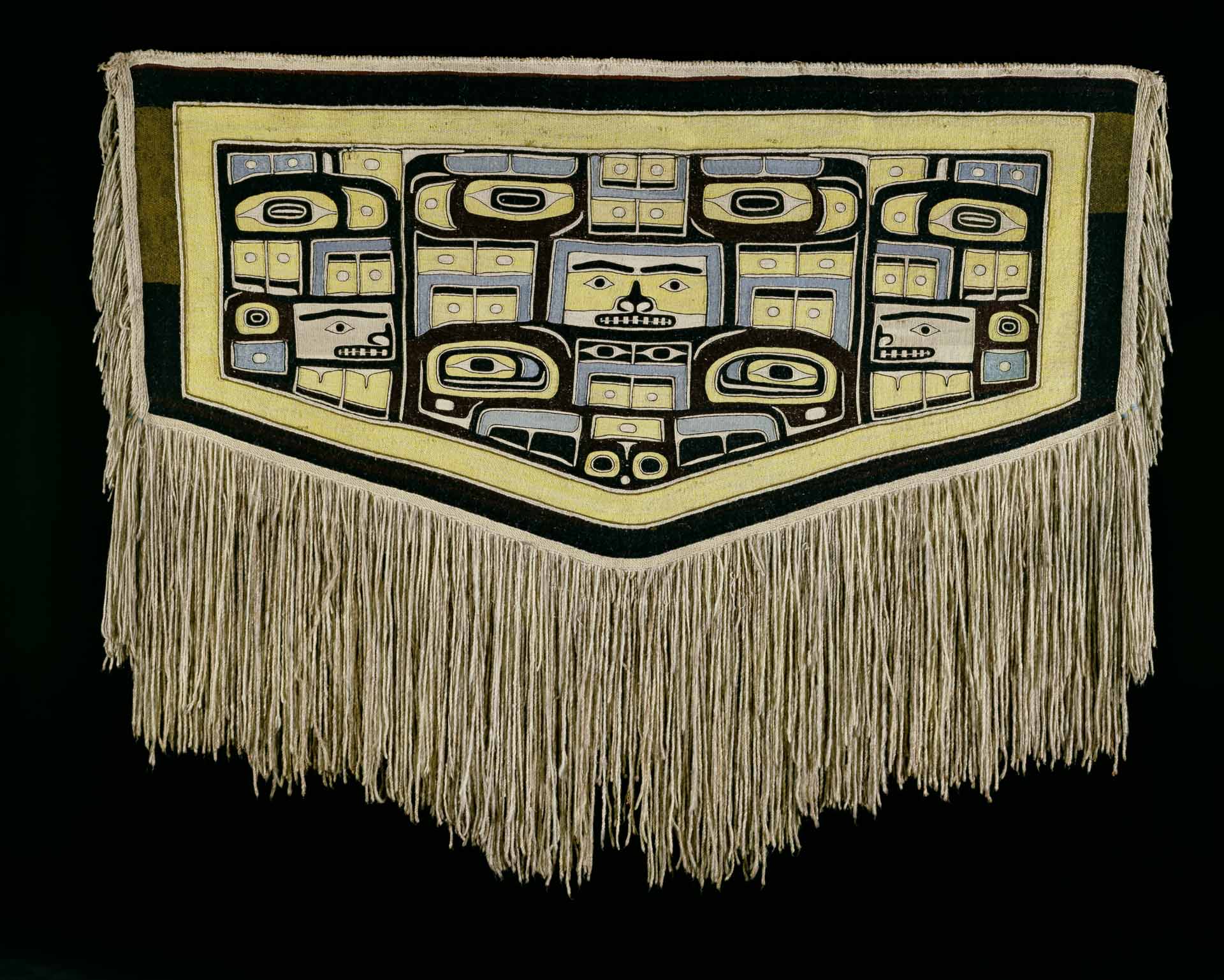
Chilkat Robe,Tlingit
Sonny selected this wonderful Tlingit, Chilkat Robe, a ceremonial garment originating from the Chilkat people of the Tlingit Nation from the Northwest Coast of present-day Canada. Dating from the latter part of the 19th Century, this is a remarkably well preserved example is a masterpiece of the Sainsbury Centre Collection. The maker’s name is not recorded. However, it is known that robes such as this, were woven by women.
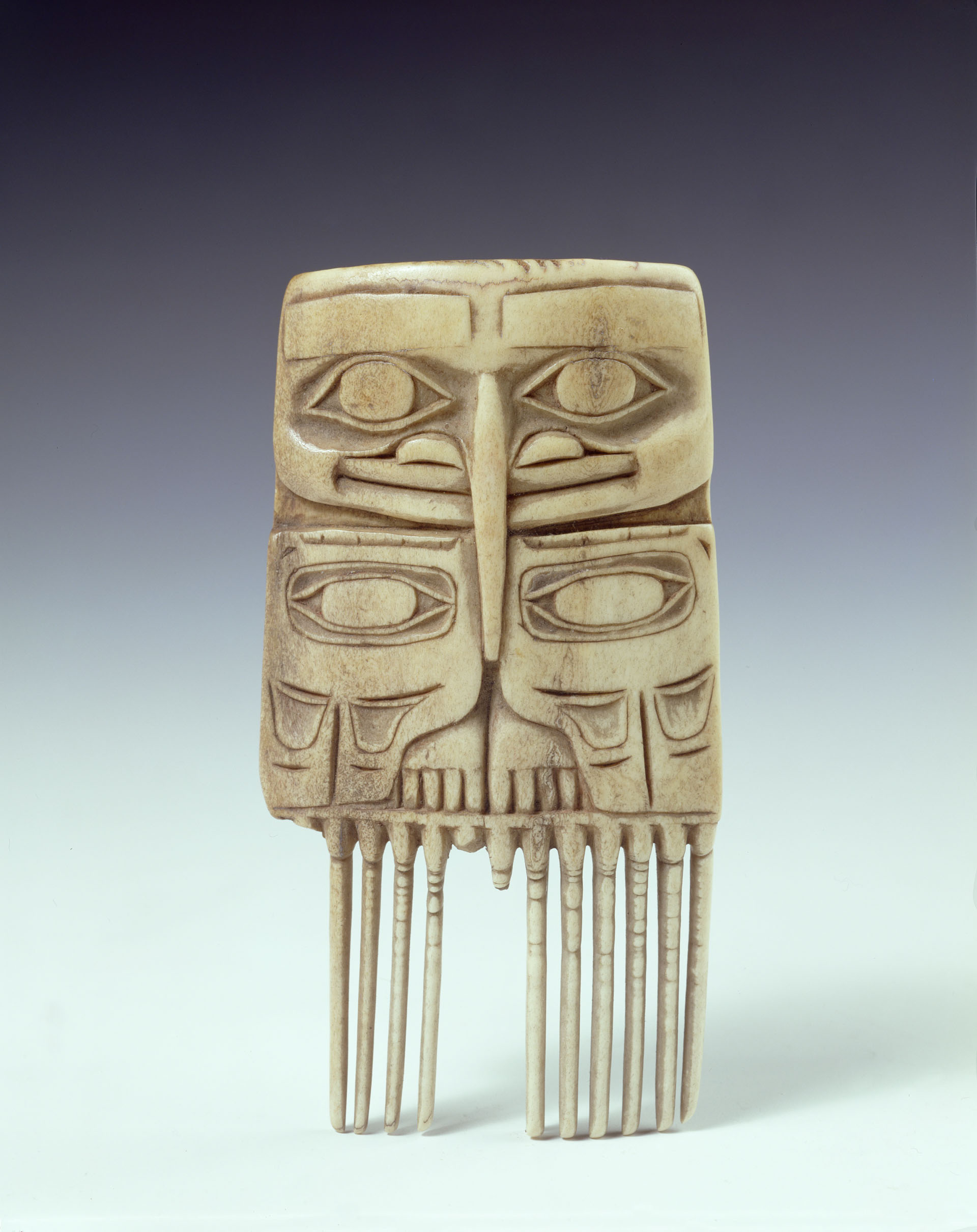
Comb, Tlingit
Beautiful comb, worn as hair ornaments and notable for the dramatic use of animal forms representing the mythical raven.
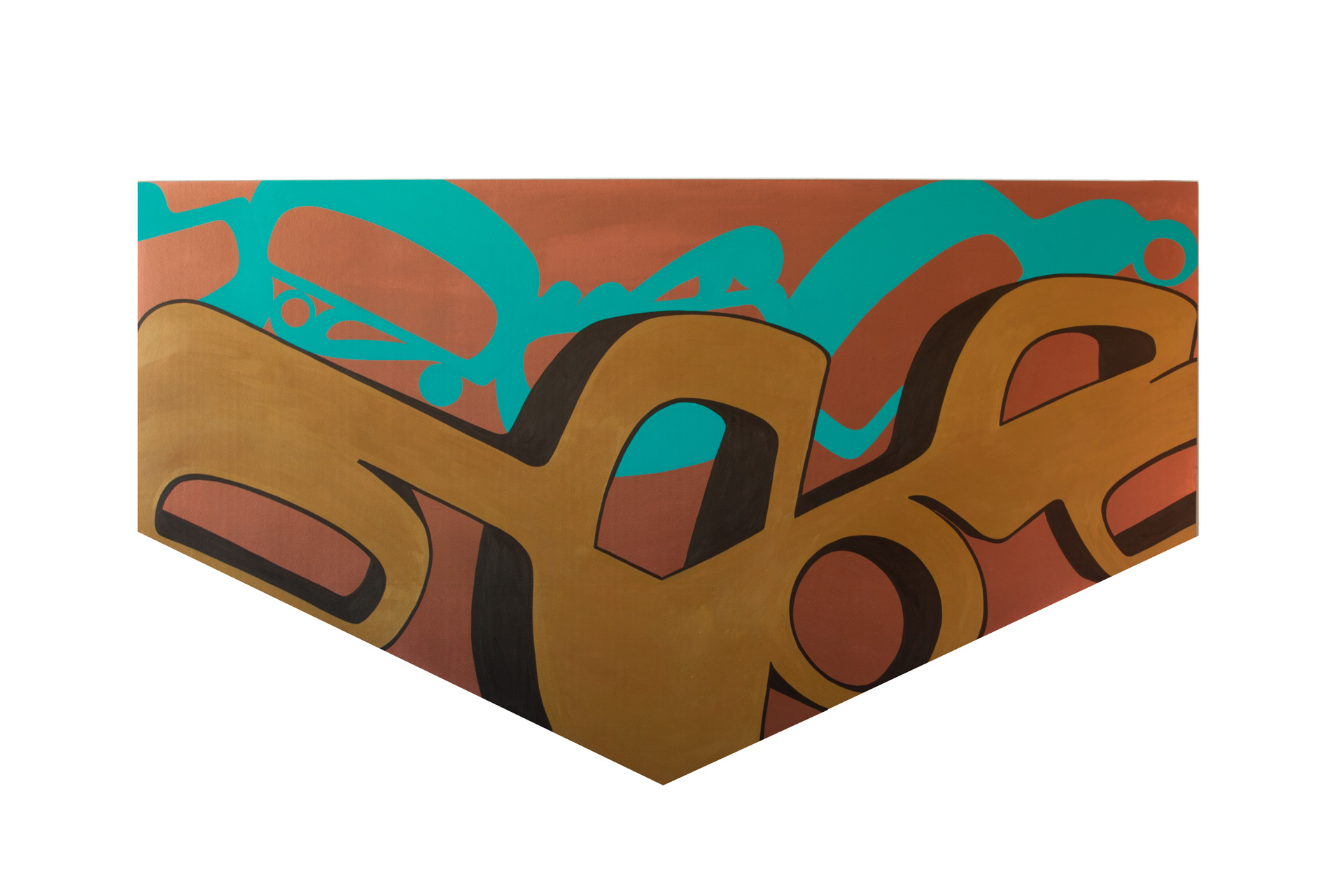
Status, Sonny Assu
Status is a painting by Sonny Assu from 2015 from the ongoing Chilkat series of works.
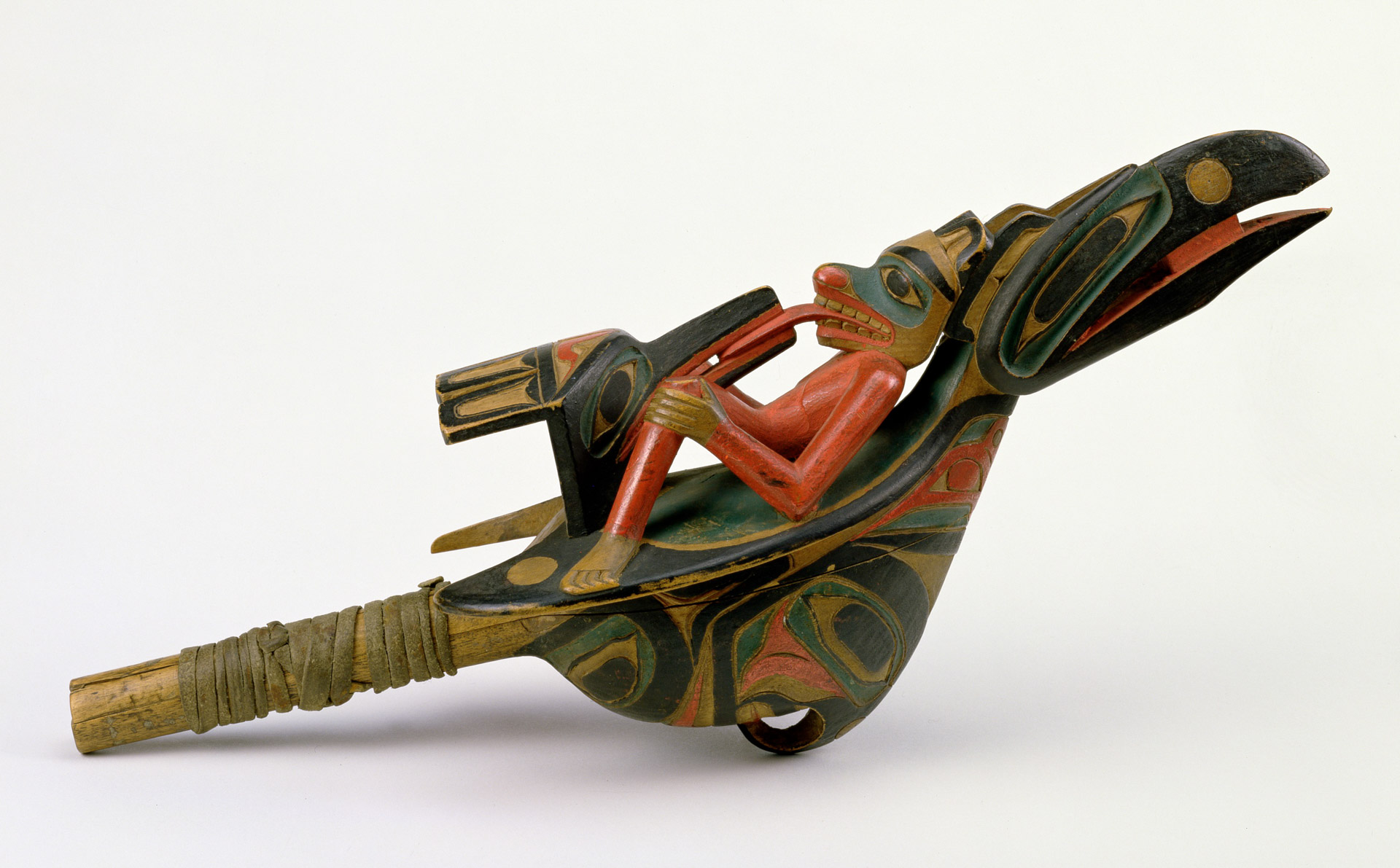
Raven rattle, Haida or Tlingit
This example dates back to the first half of the 19th century and is a tour de force from an (un)named maker.
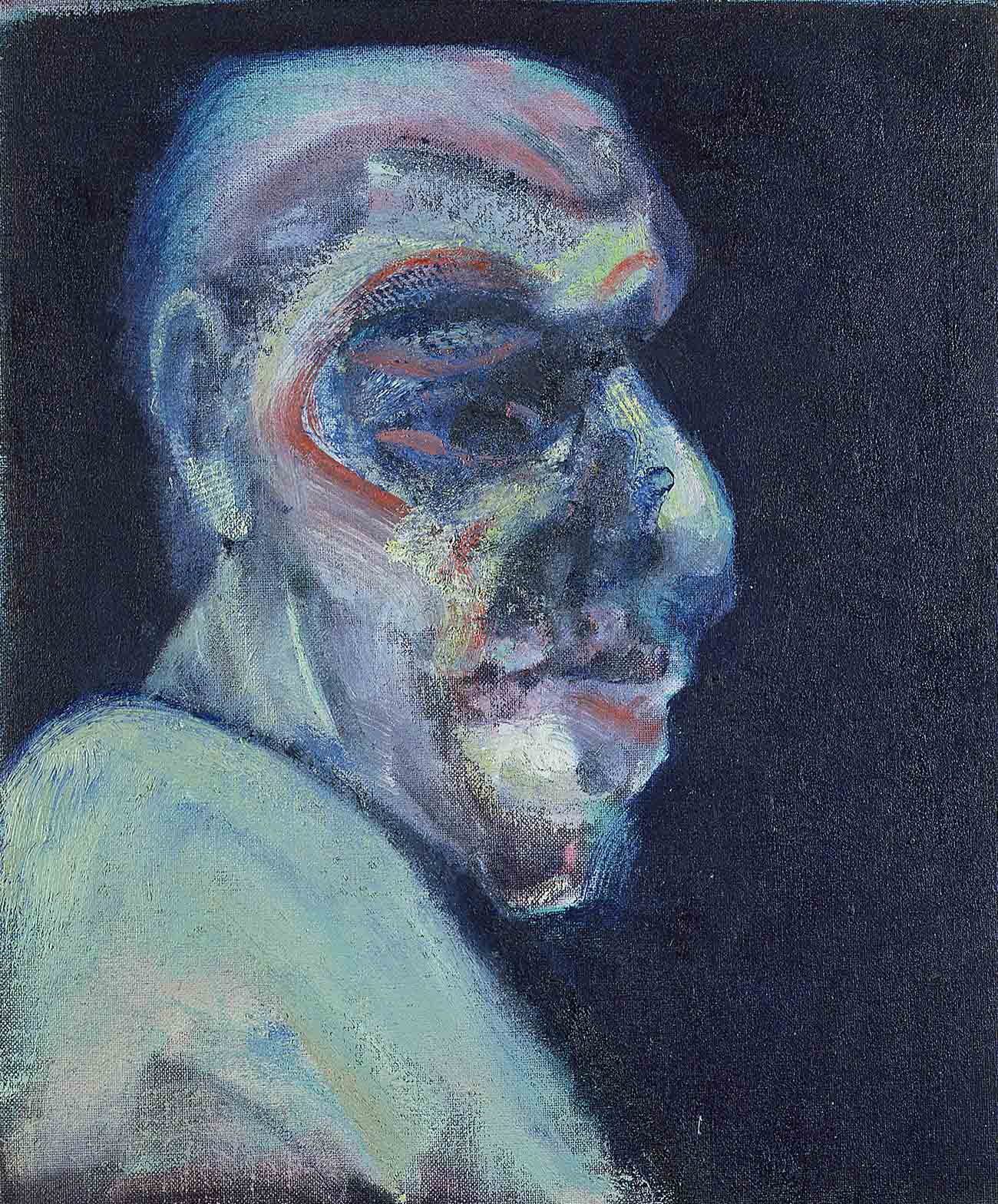
Head of a Man, No. 1, Francis Bacon
By selecting works from beyond the Northwest Coast, Sonny makes use of the power of adjacency in selecting an iconic 20th century artist.

Dance As Though the Ancestors Are Watching, Sonny Assu
As part of his residency at the Sainsbury Centre, Sonny completed a new work. We have now been able to acquire the work, Dance As Though the Ancestors Are Watching, with help from the Art Fund.

Live from the Latch, 2012, Archival pigment, Print, Sonny Assu
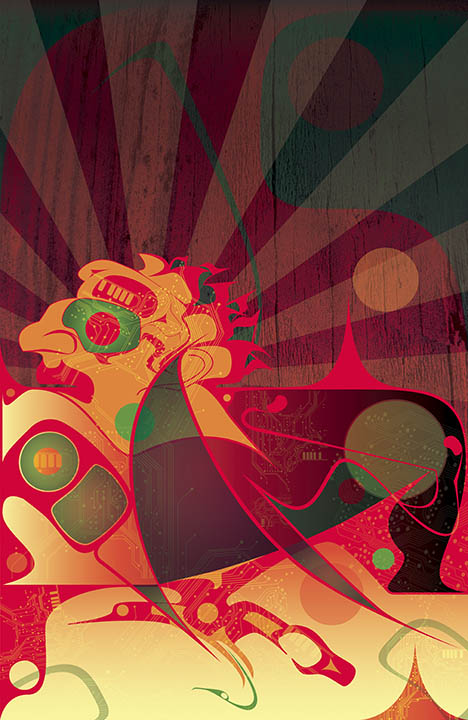
IHamatsa Rising, 2009 Archival pigment print, Sonny Assu
More Information
The display is curated by leading Canadian (Kwakwaka’wakw) artist Sonny Assu. In the summer of 2019 Assu was an artist-in-residence at the Sainsbury Centre, hosted by the research project 'Beyond Spectacle: Native North American presence in Britain'. Sonny’s work utilises both pop art and traditional North West coast practices to interrogate cultural identity and western constructions of indigenous culture. Assu said: "The Sainsbury Centre, world renowned for its unique collection and 'homey' feel, has two kinds of artworks in its collection: works by named Western artists and unnamed works, by Indigenous or non-European artists, which are marred by the spectre of colonial collection practices. Through the act of decolonising museum spaces, we can learn to recognise how these objects came to be here, and why they remain nameless and silent. Shifting the museum narrative away from the colonial mindset is a focal point within indigenous art discourses, and this conversation will continue to grow, challenging collections worldwide."

